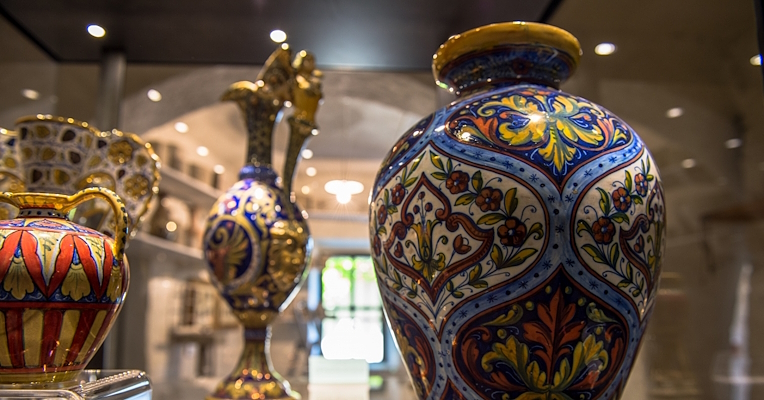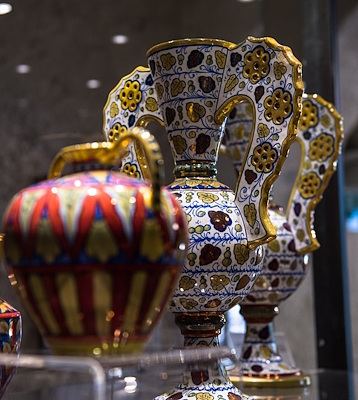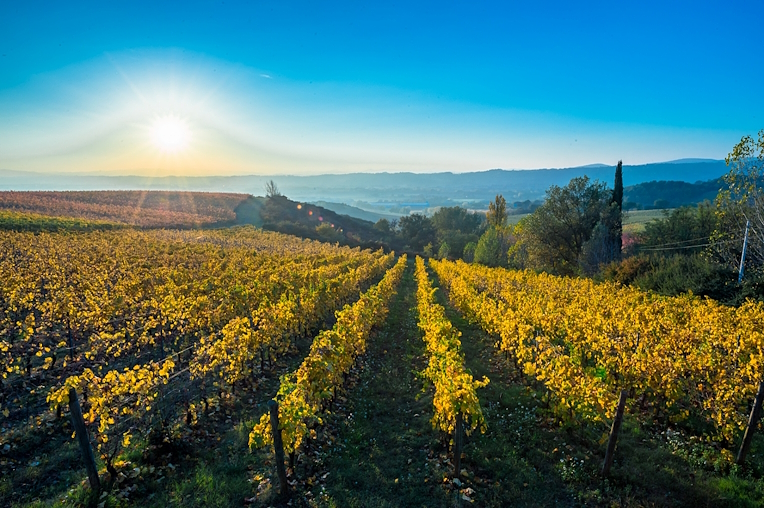Evidence from the second half of the fifteenth century affirms the quality of majolica from Gualdo Tadino: a 1456 document of the Regents of Gubbio authorizes the sale of precious jars and pots in the city markets. The manufacture of pottery finished with the lustre technique probably began between the 16th and 17th centuries. This technique consists of application to the finished piece of the extraordinary touches of gold and ruby, obtained during a third firing, with broom smoke.
During the 17th century, the Gualdo Tadino potters also worked away from home, such as Antonio and Lorenzo Pignani, who were active in Rome, and who were commissioned by Pope Clement X in 1673 to apply gold to majolica with a never-before-used technique.
The turning point was in the second half of the 19th century, with the revival of the art of metallic gold and ruby lustre in the work of Paolo Rubboli (1838-1890): production of artistic majolica of the highest quality that had a positive impact on the future of the city. Even today, the traditional types of decoration used in the Gualdo Tadino factories consist primarily of decoration with grotesques, foliage, flakes, "quartieri" and other motifs, normally on a blue background, combined with classical scenes and subjects, glazed with gold and ruby in traditional kilns known as "muffole", as mentioned in the "Tre libri del vasaio" by Cipriano Piccolpasso.






























